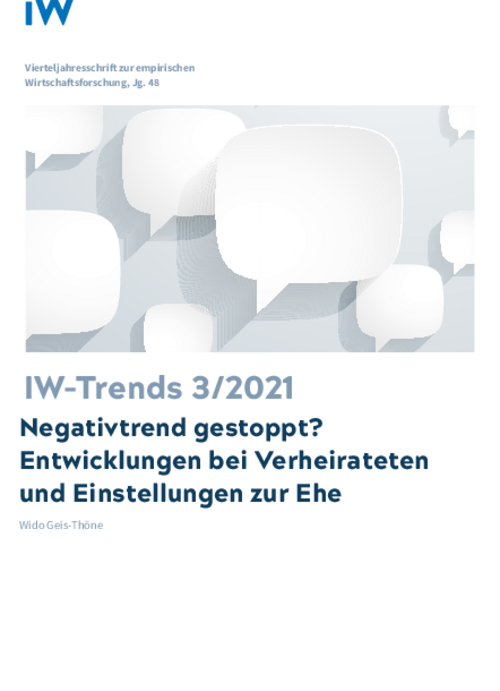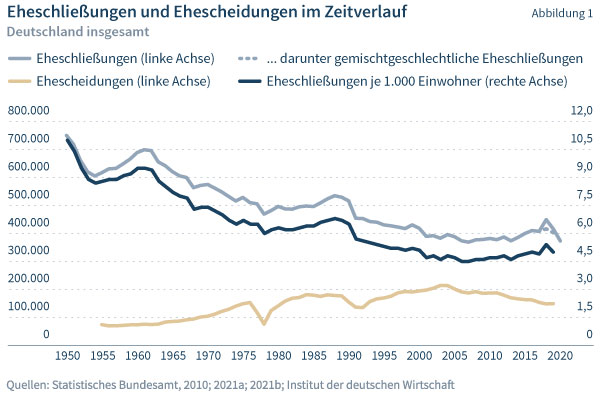In recent decades marriage has become less important. While in 1991 60.2 per cent of adults in Germany were married, in 2019 this was true of only 51.0 per cent. And with a fall from 79.7 to 60.7 per cent over the same period, the decline in the medium age range of 40- to 49-year-olds has been even steeper.

Has the Negative Trend in Marriages and Attitudes towards Wedlock Come to an End?

In recent decades marriage has become less important. While in 1991 60.2 per cent of adults in Germany were married, in 2019 this was true of only 51.0 per cent. And with a fall from 79.7 to 60.7 per cent over the same period, the decline in the medium age range of 40- to 49-year-olds has been even steeper.
However, there are now signs that this development may have bottomed out, at least among families with children. After hitting a historic low of 64.5 per cent in 2016, by 2020 the proportion of births in wedlock had already risen significantly to 66.9 per cent. The last few years have also seen an increase in the number of marriages and a declining divorce rate. Attitudes towards marriage are likewise nuanced. On the one hand, fewer and fewer respondents to the German General Social Survey (ALLBUS) believe that those living with a partner permanently should marry. Indeed, in 2018, for the first time, more people disagreed with this statement than agreed. On the other hand, younger people’s attitudes are today no longer more negative than those of their parents' generations. This is in marked contrast to the turn of the millennium, when the number of respondents agreeing that permanently cohabiting couples should marry fell steadily with decreasing age. In 2018, they were lowest among those aged 40 to 49.


Has the Negative Trend in Marriages and Attitudes towards Wedlock Come to an End?

More on the topic

The Regional Distribution of Graduates in Germany
Graduates in Germany are distributed very unevenly across the country. Taking the population aged between 35 and 44, who have generally already completed their higher education, in 2019 the highest proportions of university graduates were to be found in Berlin ...
IW
The Regional Distribution of Low-skilled Workers in Germany
Low-skilled workers in Germany are heavily concentrated in urban areas. In 2019, the proportion of 25- to 64-year-olds who had not completed at least two years of vocational training or higher education was almost twice as high in cities with a population of ...
IW